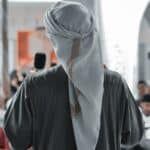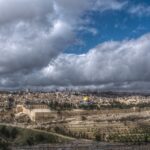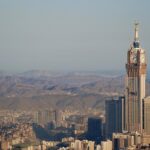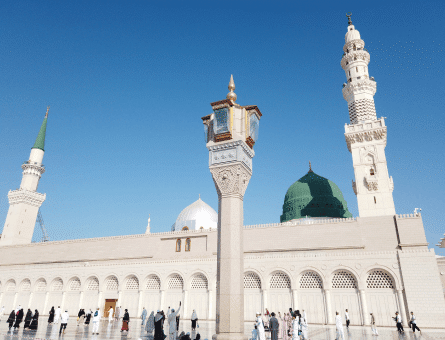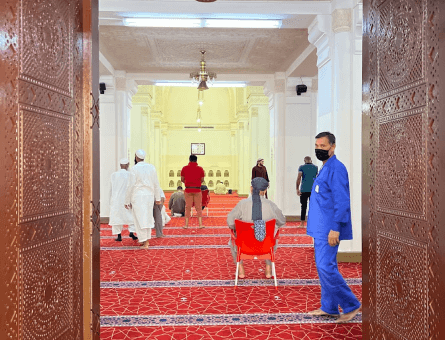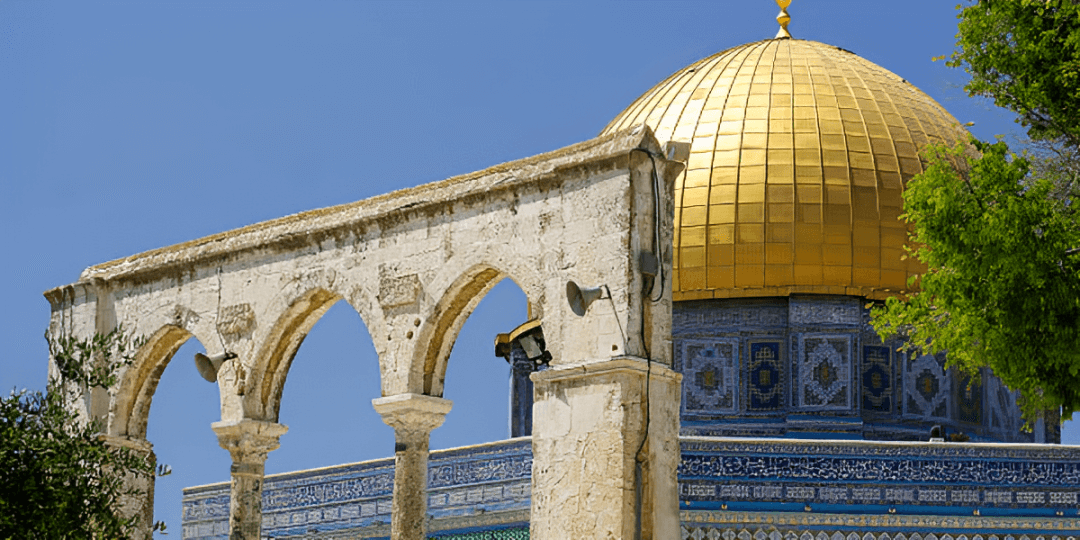Fascinating Facts about Masjid Al Aqsa
From Prophet Ibrahim (AS) and Prophet Ismail (AS) to their grandson Prophet Yaqub (AS), Prophet Musa (AS), Prophet Yusuf (AS), and Prophet Muhammad (PBUH), Masjid Al Aqsa is a significant Islamic landmark. The glistening golden dome of the third holiest mosque in the world stands as a symbol of monotheism and resistance.
In this article, we will be disclosing eight lesser-known facts about Masjid Al Aqsa. So, without any further ado, let’s begin.
What Is Masjid Al Aqsa?
Otherwise known as the Farthest Mosque or Baitul Muqadis, Masjid Al Aqsa is located in the old city of Jerusalem and is considered the third holiest mosque after Masjid Al Haram and Masjid Nabawi.
The history of Masjid Al Aqsa makes it an important site of worship for Muslims all over the world. Constructed over Temple Mount (The Noble Sanctuary), Masjid Al Aqsa covers an area of 144,000 square metres. The sacred complex features the Al Aqsa library, courtyards, prayer rooms, mosques, and other religious landmarks.
What Is Special about Masjid Al Aqsa to Muslims?
According to Islamic scriptures, Majid Al Aqsa was one of Prophet Muhammad’s destinations (PBUH) during the event of Miraj (The Night Journey). It was Masjid Al Aqsa where the Messenger (PBUH) of Allah SWT led all the prophets (PBUT) in Salah before ascending to heaven on Buraq, a magnificent winged creature.
Even before this, Masjid Al Aqsa was believed to be home to many prophets and central to preaching monotheism throughout history. It was also the first Qiblah of Islam, i.e. the direction Muslims faced while offering Namaz (Salah).
Abu Hurayrah (ra) relates that the Prophet (saw) said: “Do not undertake a journey to visit any Mosque, but three: this Mosque of mine, the Mosque of al-Haram and the Mosque of Aqsa”
8 Facts about Masjid Al Aqsa That You Never Knew!
Featuring complex early Islamic architectural design and owing to careful restoration over the years, even today, Masjid Al Aqsa stands strong and is one of the most important mosques in the Islamic world. Some interesting facts about Masjid Al Aqsa are listed below:
Who Built Masjid Al Aqsa?
Masjid Al Aqsa was first built by Prophet Ibrahim (AS) but was demolished after the conquest of Jerusalem. The Farthest Mosque was then officially reconstructed for the first time on the orders of Abdul Malik ibn Marwan in 705 AD on top of the Temple Mount.
He passed away before the construction of the mosque was completed, and his son later continued the project and played an instrumental role in laying the foundation of Islam’s third-most important mosque.
However, an unfortunate earthquake in 748 AD ended up destroying the first structure of Masjid Al Aqsa. And so it was built again, only to be destroyed in 771 AD. The historical mosque was constructed once again in 780 AD but was brought to the ground by an earthquake in 1033 AD.
Following this, soon after the Crusaders took over in 1099 AD, they reconstructed Masjid Al Aqsa and made it their palace. It was later made the headquarters for the Templar Knights in 1119 AD. Masjid Al Aqsa was then renovated and reconstructed multiple times during the era of the Ottoman Empire.
Long story short, the architecture of Masjid Al Aqsa that we see today isn’t the same structure that was built hundreds of years ago. The Qibli Mosque has gone through several reconstructions throughout the years, with only one thing that remained the same – its location.
What Does Al Aqsa Mean? How Did Masjid Al Aqsa Get Its Name?
Al Aqsa is an Arabic word that has two meanings. The first one is “the supreme,” which refers to the status of the mosque in Islam and within the Muslim community. However, the second one is “the farthest,” referring to the distance of Masjid Al Aqsa from the city of Makkah, Saudi Arabia.
According to Islamic history, Masjid Al Aqsa got its name from the story of “The Night Journey,” as mentioned in the Holy Quran. During the event of Miraj, Prophet Muhammad (PBUH) was taken on a journey on a winged creature named Buraq, from the lands of Makkah to Jerusalem and then to the seven skies, granting him (PBUH) the chance to meet Allah SWT.
It is also believed that it was Masjid Al Aqsa that Prophet Muhammad (PBUH) led all the prophets (PBUT) in prayer while facing the direction of the Holy Kaaba.
Masjid Al Aqsa in the Quran
Little do people know that Masjid Al Aqsa is one of the five mosques mentioned in the Holy Quran by name. The other mosques are, Masjid Al Haram in Makkah, Masjid Nabawi in Madinah, Masjid-e-Dirir, and the Quba Mosque.
In the Holy Quran, Allah SWT mentions Masjid Al Aqsa and Masjid Al Haram while telling the tale of Miraj – the Night Journey and Ascension.
سُبْحَـٰنَ ٱلَّذِىٓ أَسْرَىٰ بِعَبْدِهِۦ لَيْلًۭا مِّنَ ٱلْمَسْجِدِ ٱلْحَرَامِ إِلَى ٱلْمَسْجِدِ ٱلْأَقْصَا ٱلَّذِى بَـٰرَكْنَا حَوْلَهُۥ لِنُرِيَهُۥ مِنْ ءَايَـٰتِنَآ ۚ إِنَّهُۥ
هُوَ ٱلسَّمِيعُ ٱلْبَصِيرُ ١
“Exalted is He who took His Servant by night from al-Masjid al-Haram to al-Masjid al-Aqsa, whose surroundings We have blessed, to show him of Our signs. Indeed, He is the All-Hearing, the All-Seeing.” [Holy Quran, 17:1]
Masjid Al Aqsa Isn’t Just One Mosque
While most people think of Masjid Al Aqsa as a single building, it is a complex comprising several mosques including the Marwani Mosque and the Buraq Mosque. Masjid Al Aqsa is basically the building located in the southernmost corner of the complex.
Closest to the Qiblah, it is also known as the “Qibli Mosque.” The wider compound of Masjid Al Aqsa is also referred to as the Noble Sanctuary (Al-Haram ash-Sharif).
Masjid Al Aqsa Is the First Qiblah for Muslims
According to Islamic scriptures, Masjid Al Aqsa was the first Qiblah (direction of prayer) in Islam. It is believed that before the Holy Kaaba was restored and Allah SWT’s command of changing the direction of the Qiblah to the Holy Kaaba was revealed, Prophet Muhammad (PBUH) and the Muslim Ummah used to pray Salah facing the Noble Sanctuary in Jerusalem, Baitul Muqadas (Masjid Al Aqsa).
Masjid Al Aqsa Once Had the Legendary Minbar
A famous member of the Turkish Zengid dynasty, Imad ad-Din Zengi, ordered the construction of a special minbar inside Masjid Al Aqsa. The architecture of the minbar wasn’t only beautiful, but the remarkable fact about this minbar was that it was made without using any form of glue or nails.
Unfortunately, Imad ad-Din didn’t live to see it come to fruition. However, Salahuddin, the protégé of Imad ad-Din, fulfilled the dream of his teacher and liberated Jerusalem for the second time in Islamic history and installed the minbar.
The Dome of Masjid Al Aqsa Has Changed Over the Years
What is the first thing that comes to your mind when you think of Masjid Al Aqsa? Its legendary golden dome. According to Islamic history, the magnificent Dome of the Rock, which was constructed by Abdul Malik ibn Marwan, the famous Umayyad ruler, was originally made using wood with either lead or brass, and featured a ceramic cover.
However, the shiny golden dome we see today was built during the Ottoman Era under the command of Sulaiman the Magnificent. He ordered the addition of the distinctive gold layer and the renovation of the façade of the building using Ottoman tiles. The iconic dome of Masjid Al Aqsa is a thousand years old.
Masjid Al Aqsa Houses the Graves of Noble Muslims
Even though there’s no accurate information about who and how many companions have been buried on the burial grounds of Al-Haram as-Sharif, the complex is said to be the resting place of some of the most beloved Prophets (AS) and companions of the Messenger (PBUH) of Allah SWT, including the grave of Ubadah ibn Samir (RA), the first Islamic judge in Masjid Al Aqsa.
You can also find the mausoleum of Prophet Suleiman (AS) in Masjid Al Aqsa. It is believed that he passed away while supervising the construction of the Qibli Mosque. The graveyard is known as “Bab ar-Rahmah,” and it’s the third-most prominent cemetery in the Islamic community after the graveyards of Makkah and Madinah.
Pictures of Masjid Al Aqsa
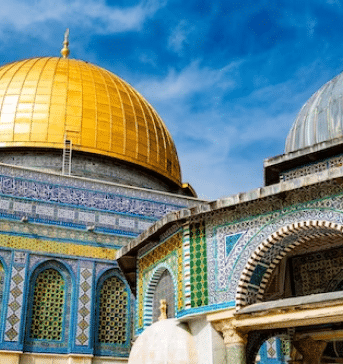
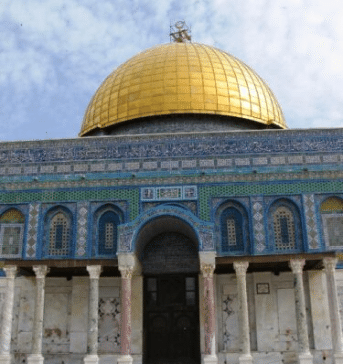
Summary – Facts about Masjid Al Aqsa
Attracting more than 10,000 pilgrims from Palestine and across the world every year, Masjid Al Aqsa is one of the most significant and holiest Islamic monuments. Located in the old city of Jerusalem, the history of the Farthest Mosque dates back to the early seventh century when a renowned Islamic ruler ordered the construction of Masjid Al Aqsa on top of the Temple Mount, or the Noble Sanctuary.
Today, Masjid Al Aqsa serves as a symbol of Palestinian resistance and is protected by Muslim communities worldwide.
Explore The New Pilgrim App
The Ultimate App
for Hajj and Umrah!





